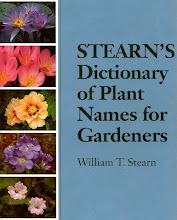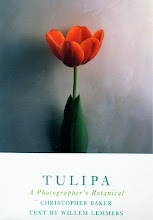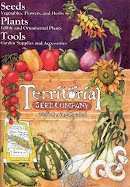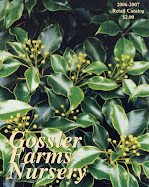
Paeonia corsica in April
I use Paeonia corsica because it is easier to spell (& say) than Paeonia cambessedesii. Peony expert Josef J Halda lists the plant as P corsica in his 2004 book, The Genus Paeonia. It is 'one of the most charming peonies' according to Halda. I agree. The blooms of my Corsican Peonies are a beautiful pink, simple yet bold wildflower. Leaves are silver-blue on top, red below. April blooms are followed in August by large weird seed pods arranged like a jester's hat. Shining red seams split open in October to show jet black seeds against a shocking pink interior. My seeds came from the Northwest Perennial Alliance seed exchange, courtesy of Marion Raitz. It took 2 years for them to germinate. Then they grew quickly, flowering within 3 years of germination. They need a dry site. I planted mine on a sunny slope.








































































